Wrigley Field
Introduction
Text-to-speech Audio
Images
The famous outfield bleachers and scoreboard at Wrigley Field.
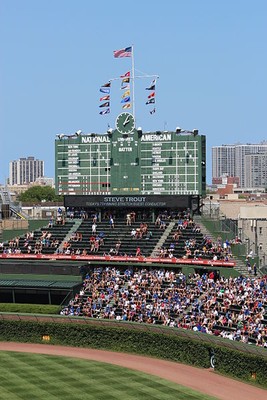
Wrigley Field's famous marquee during the stadiums centennial season.
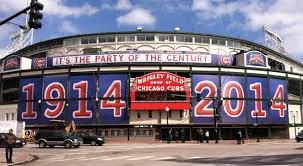
Joa the Bear Cub, the guest of honor at the first home game in Chicago Cubs history in 1916.
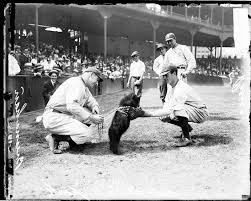
Aerial view of Wrigley Field after completion of the outfield renovations in 1937.
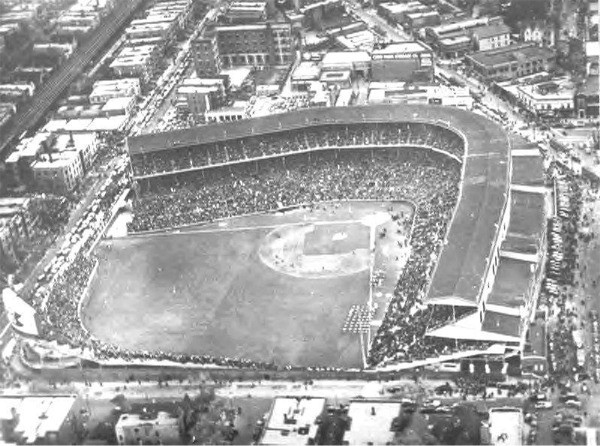
Construction of the famous outfield bleachers and scoreboard in 1937.
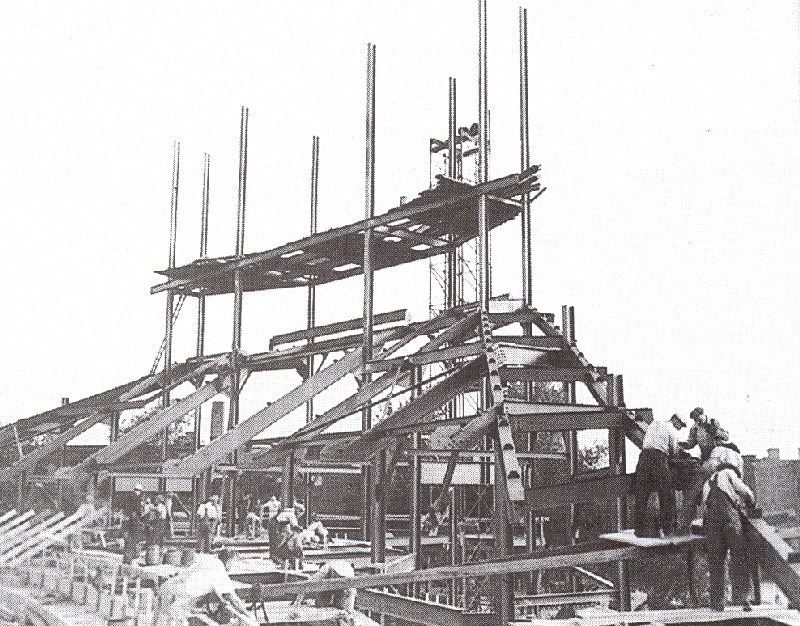
Wrigley Field before the four year, $375 million dollar renovation project began at the end of the 2014 season.
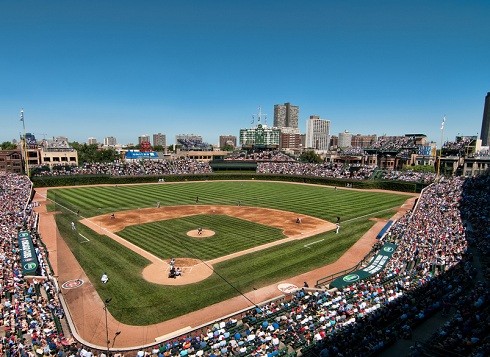
Modern-day Wrigley Field with the left and right field scoreboards in place.

The flag that flies after every Cub home win.
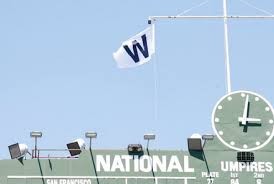
Backstory and Context
Text-to-speech Audio
Wrigley Field, the home of the Chicago Cubs Major League Baseball team, is a stadium with a rich and storied history. It is the site of many famous moments in sports history and is a revered and beloved landmark for Chicagoans and tourists to the city alike.
Built in 1914, Wrigley Field is the second-oldest MLB ballpark in the country, just behind Fenway Park in Boston. Located at 1060 West Addison Street, Wrigley Field was constructed on land previously occupied by a seminary. Originally called Weeghman Park after landowner Charles H. Weeghman, the stadium seated 14,000 occupants and cost $250 thousand dollars to build. Between the infield and outfield, the stadium boasted 4,000 yards of soil and 4 acres of bluegrass. The first team to call Weeghman Park home was the Chicago Federals, a team that was part of the Federal League which folded in 1915. The Federals played their first game on April 23rd, 1914, against the Kansas City Royals, resulting in the Federals nabbing their first win as a Major League Baseball team. Wrigley Field is the last Federal League ballpark standing (Chicago Cubs).
Upon completion of the 1915 baseball season and the subsequent dissolution of the Federal League, the Cubs team was purchased by Weeghman from the Taft family of Cincinnati and was moved to Weeghman Park as members of the National League. The Cubs’ first game at Weeghman Park was played on April 20, 1916 against the Cincinnati Reds which resulted in the Cubs reigning victorious, beating the Reds 7-6 in 11 innings (Wrigley Field/Cubs Park/Weeghman Park Historical Analysis by Baseball Almanac). To celebrate the momentous occasion, a bear cub named Joa was paraded around the ballpark for spectators to see (Chicago Cubs).
The stadium was called Cubs Park upon the sale of the team from Weeghman to the Wrigley family in 1920 with the official name being changed to Wrigley Field in 1926 in honor of team owner William Wrigley, Jr. The famous Wrigley Field marquee was constructed in 1934 and remains intact and fully functional today. In 1937, the outfield was renovated to accommodate more occupants, thus the bleachers were added as well as the famous scoreboard. Despite numerous renovations to the stadium over the years, the original scoreboard still remains intact and is used today. 1937 was also the year the infamous ivy was planted. Bill Veeck, treasurer for the Cubs (whose late father had once been the president of the Cubs) purchased and planted bittersweet vines from the top to bottom of the wall and ivy at the base of the wall. This unique touch is a beloved part of Wrigley Field’s history and is recognizable to baseball fans around the world (Chicago Cubs).
Over the years, Wrigley Field has grown to seat 41,160 occupants. Stadium lighting was added in 1988 to allow for night games to be played. From 1994-95, 63 private boxes were also added to the stadium. After the completion of the 2005 baseball season, the outfield bleachers were expanded and a restaurant was added. The restaurant, which serves local cuisine like the famous Chicago-style hot dogs and features a bleacher patio that can seat up to 600 guests, can be rented out for private engagements (Chicago Cubs).
Wrigley Field has seen some of the greatest moments in baseball history and is the home of many first for baseball. Wrigley Field was the first MLB stadium to feature organ music as well as the first ballpark to allow spectators to keep foul balls. Wrigley Field also was the first ballpark to have permanent concession stands. The stadium was also the location of the 1947, 1962, and 1990 All-Star Baseball Games as well as games from the 1918, ’29, ’32, ’35, ’38, and ’45 World Series’. The highest scoring game in baseball history was played at Wrigley Field between the Cubs and the Philadelphia Phillies on August 15, 1922 with a final score of 26-23. The first homerun of the 1938 World Series was also scored at Wrigley Field by a 17 year-old Lou Gherig. While no batted baseballs have ever hit the famous scoreboard, golfer Sam Snead did manage to hit it with a golf ball when he teed off on home plate before the 1951 season opener against the Cincinnati Reds. Baseball legend Pete Rose also reached his 4,191st career hit, tying him with Ty Cobb for most hits in baseball history. A proud memory for Cubs fans was broadcaster Harry Caray’s singing of “Take Me Out to the Ball Game” during the 7th inning stretch (Wrigley Field, Chicago Cubs ballpark).